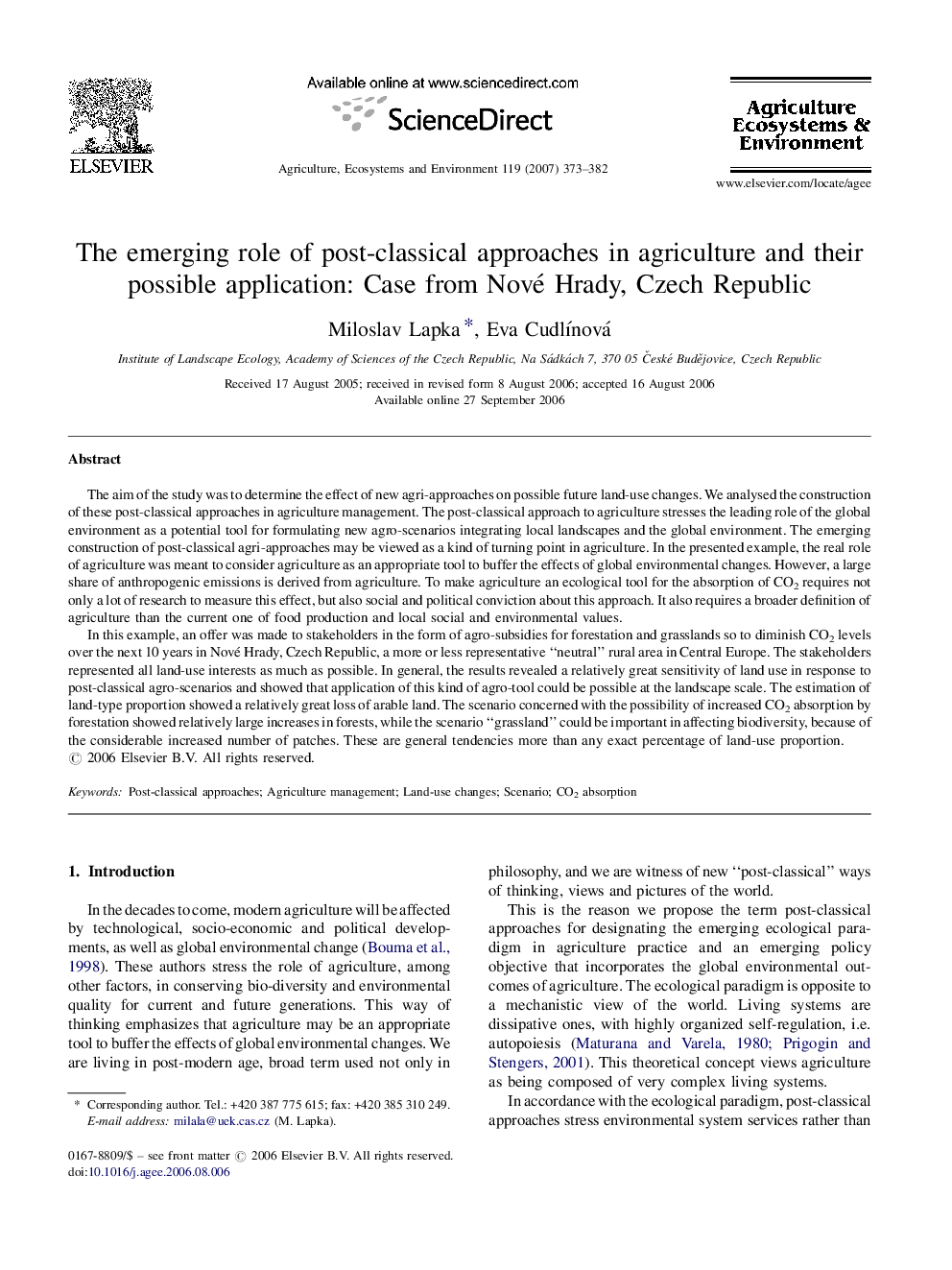| Article ID | Journal | Published Year | Pages | File Type |
|---|---|---|---|---|
| 2415862 | Agriculture, Ecosystems & Environment | 2007 | 10 Pages |
The aim of the study was to determine the effect of new agri-approaches on possible future land-use changes. We analysed the construction of these post-classical approaches in agriculture management. The post-classical approach to agriculture stresses the leading role of the global environment as a potential tool for formulating new agro-scenarios integrating local landscapes and the global environment. The emerging construction of post-classical agri-approaches may be viewed as a kind of turning point in agriculture. In the presented example, the real role of agriculture was meant to consider agriculture as an appropriate tool to buffer the effects of global environmental changes. However, a large share of anthropogenic emissions is derived from agriculture. To make agriculture an ecological tool for the absorption of CO2 requires not only a lot of research to measure this effect, but also social and political conviction about this approach. It also requires a broader definition of agriculture than the current one of food production and local social and environmental values.In this example, an offer was made to stakeholders in the form of agro-subsidies for forestation and grasslands so to diminish CO2 levels over the next 10 years in Nové Hrady, Czech Republic, a more or less representative “neutral” rural area in Central Europe. The stakeholders represented all land-use interests as much as possible. In general, the results revealed a relatively great sensitivity of land use in response to post-classical agro-scenarios and showed that application of this kind of agro-tool could be possible at the landscape scale. The estimation of land-type proportion showed a relatively great loss of arable land. The scenario concerned with the possibility of increased CO2 absorption by forestation showed relatively large increases in forests, while the scenario “grassland” could be important in affecting biodiversity, because of the considerable increased number of patches. These are general tendencies more than any exact percentage of land-use proportion.
